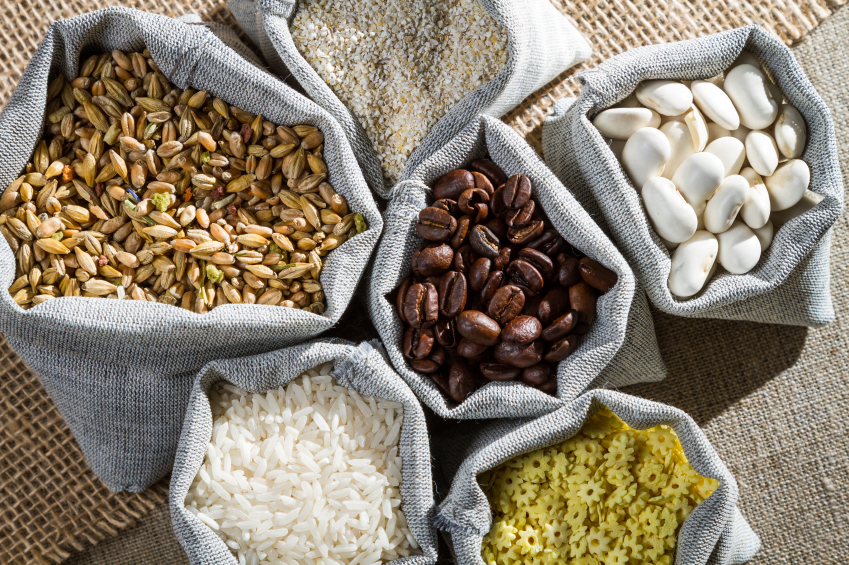

| Visitors Now: | |
| Total Visits: | |
| Total Stories: |

| Story Views | |
| Now: | |
| Last Hour: | |
| Last 24 Hours: | |
| Total: | |
25 Must Have Survival Foods: Put Them In Your Pantry Now
This information has been contributed by Tess Pennington, author of The Prepper’s Cookbook. After joining the Dallas chapter of the American Red Cross in 1999 Tess worked as an Armed Forces Emergency Services Center specialist and is well versed in emergency and disaster management & response. You can visit her web site at www.ReadyNutrition.com and create a complete family preparedness plan with her FREE series 52 Weeks to Preparedness.
Editor’s Note: In the following article Tess provides a list of key pantry staples for extended emergencies. While it’s generally pretty easy to go out and purchase MRE’s and freeze dried foods in bulk, what poses a challenge to many is understanding how to properly stock a pantry. Why would one need to stock a pantry when ready-to-eat meals can be easily bought? Cost, for one. Common dry goods are significantly cheaper than meals in a bag or box. Nutrient density is another. Whole, natural foods are going to give you the most bang for your buck when we’re talking about protein, carbohydrates, calories and nutrition. And, of course, with a variety of dry goods and whole foods in your pantry you can more easily avoid food fatigue. Freeze dried eggs and TVP will get old after a while, especially if you don’t have access to recipes that will help vary your diet. But a well stocked pantry will do wonders for your psychology and the general attitude of those around you. Consider adding all or some of the following foods to your preparedness gear.
One of my favorite phrases that I tell new preppers is that “your preps are your lifeline.” We must put measures in place before a disaster is upon us in order to have these lifelines available to us when we need them the most.
Building an emergency pantry is one of those lifelines that takes both time and planning to make it fully functional. Ideally, you want to store shelf stable foods that your family normally consumes, as well as find foods that serve multiple purposes.
A few other points to consider when starting an emergency food pantry are:
- To store emergency foods that will not require refrigeration, and should require little electricity or fuel to prepare.
- The food should have a long shelf life.
- It should provide ample nutrition and contain little salt.
In my book, The Prepper’s Cookbook: 300 Recipes to Turn Your Emergency Food into Nutritious, Delicious, Life-Saving Meals, I use the following essential food staples as the basis for the recipes. The following foods are all popular food staples that should be considered as “must haves” for your emergency pantries. The advantages to storing these items, is they encompass all of the key consideration points listed above. Best of all, these items are very affordable and versatile, thus making them worthy of being on your storage shelves for extended emergencies.
Keep in mind, that water is your most important prep. You need water for consumption, food preparation, and for sanitary needs. Ensure that you have a large quantity of water stored away for emergency use.
Stock up on the following items today to get your prepper pantry ready for the next extended emergency:
1. Canned fruits, vegetables, meats, and soups
2. Dried legumes (beans, lentils, peas)
3. Crackers
4. Nuts
5. Pasta sauce
6. Peanut butter
7. Pasta
8. Flour (white, whole wheat)
9. Seasonings (vanilla, salt, pepper, paprika, cinnamon, pepper, taco seasoning, etc.)
10. Sugar
11. Bouillon cubes or granules (chicken, vegetable, beef)
12. Kitchen staples (baking soda, baking powder, yeast, vinegar)
13. Honey
14. Unsweetened cocoa powder
15. Jell-O or pudding mixes
16. Whole grains (barley, bulgur, cornmeal, couscous, oats, quinoa, rice, wheat berries)
17. Nonfat dried milk
18. Plant-based oil (corn oil, vegetable oil, coconut oil, olive oil)
19. Cereals
20. Seeds for eating and sprouting
21. Popcorn (not the microwavable kind)
22. Instant potato flakes Instant potato flakes
23. Packaged meals (macaroni and cheese, hamburger helper, Ramen noodles, etc.)
24. Purified drinking water
25. Fruit juices, teas, coffee, drink mixes
Use this list as a starting point on beginning or extending your preparedness pantry- and don’t feel handcuffed to only stocking up on these items. Always keep your family’s food preferences and dietary needs in mind when investing in your food supply. It would be extremely advantageous to have a two week supply (at a minimum) of these shelf stable food items on hand to care for your family. To see how much your family would need, click here.
We never know when disasters or emergencies may strike, so why not be prudent and be ready for them before they effect our livelihood and well being.
***********
Tess Pennington is the author of The Prepper’s Cookbook: 300 Recipes to Turn Your Emergency Food into Nutritious, Delicious, Life-Saving Meals. When a catastrophic collapse cripples society, grocery store shelves will empty within days. But if you follow this book’s plan for stocking, organizing and maintaining a proper emergency food supply, your family will have plenty to eat for weeks, months or even years. Visit her web site at ReadyNutrition.com.
This article has been contributed by SHTF Plan. Visit www.SHTFplan.com for alternative news, commentary and preparedness info.
2013-04-13 14:15:55
Source:




